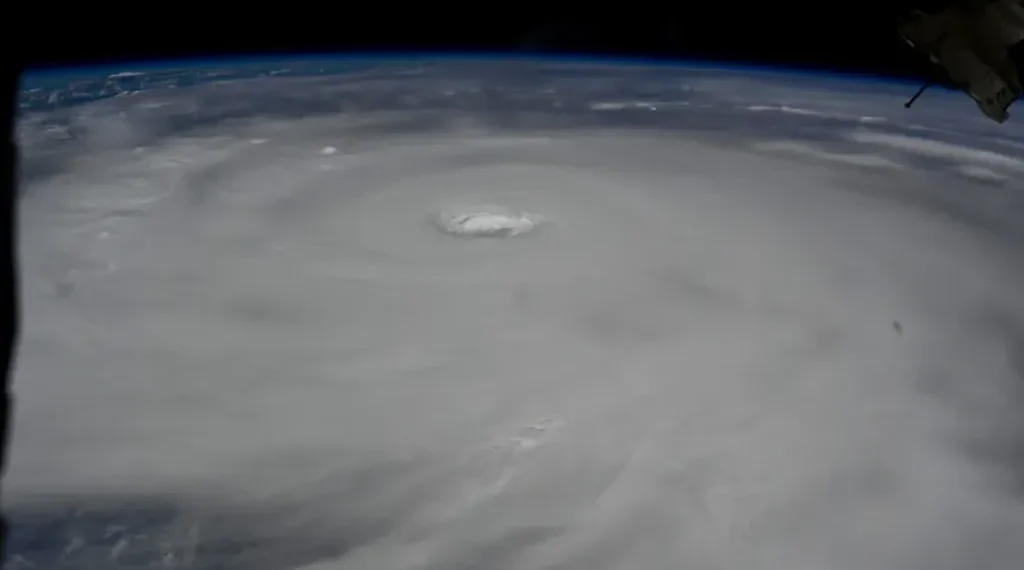Typhoon Ragasa Threatens Southern China After Deadly Landfall in the Philippines
Published: September-23-2025, 14:00 EDT
A powerful storm system, Typhoon Ragasa, is moving toward southern China after battering the northern Philippines with destructive winds, flooding, and landslides. The storm has already caused significant damage, forced mass evacuations, and disrupted transport across Asia as authorities in Hong Kong, Macau, Shenzhen, and Guangzhou prepare for impact.
Destructive Path Across the Philippines
Typhoon Ragasa, known locally in the Philippines as Nando, made landfall on Panuitan Island in Cagayan Province earlier this week as a super typhoon with sustained winds exceeding 165 mph (267 kph), the strength of a Category 5 hurricane.
The storm triggered widespread destruction, including damaged homes, uprooted trees, and blocked roads, according to the Philippines Information Agency (PIA). Landslides and flash floods were reported across northern Luzon, while the outer bands lashed nearby provinces with torrential rain.
Rescue operations remain underway. In Cagayan, three people died after a fishing boat capsized in rough waters, six survivors were pulled to safety, and four individuals remain missing. Meanwhile, a landslide in Benguet claimed one life and left several others injured.
Local resident Orlando Bartolome Labio told CNN the storm’s impact on agriculture has been devastating. “Among the most affected are the farmers, including my parents. It’s a very sad event,” he said.
Evacuations and Emergency Response
The Philippines’ National Disaster Risk Reduction and Management Council confirmed that more than 24,000 residents were evacuated across northern and central Luzon. Heavy rain advisories remain in effect as Ragasa’s outer bands continue to affect large areas, raising fears of further flooding and landslides.
Images from Calayan and Camiguin Islands show roofs torn from homes, boats washed ashore, and streets inundated with seawater. Videos shared by the Philippines Coast Guard depict rescue teams assisting stranded families and clearing debris from mudslides.
Despite weakening slightly to Category 4 strength, Ragasa remains highly dangerous with sustained winds of 140 mph (222 kph). Meteorologists expect continued rainfall and possible landslides as the storm moves across the South China Sea.
Hong Kong, Macau, and Mainland China on High Alert
Authorities in southern China have raised emergency alerts as Typhoon Ragasa approaches Guangdong Province. Entire megacities are bracing for disruption, with schools suspended, public transport halted, and workplaces closed.
In Shenzhen, officials announced the planned relocation of 400,000 residents from low-lying and coastal areas. Guangzhou, a city of 18.6 million people, is expected to declare its highest-level red alert. The Hong Kong Observatory warned of storm surges reaching up to four meters in some areas, describing the potential ocean swells as “phenomenal.”
Across Hong Kong and southern China, supermarkets have seen shelves emptied as residents stockpile essentials. The massive Hong Kong-Zhuhai-Macau Bridge has also been closed until conditions improve.
Widespread Flight Disruptions
Air travel across the region has been heavily affected. Hong Kong-based Cathay Pacific suspended all passenger flights departing and arriving in the city from Tuesday evening through Thursday morning. Hong Kong Airlines also announced dozens of flight cancellations for the week.
Taiwan, Hong Kong, and multiple airports in Guangdong Province reported hundreds of delayed or canceled flights as Ragasa’s outer bands disrupted regional air traffic.
Storm Expected to Weaken but Remains Dangerous
Satellite images from the International Space Station captured the scale of Ragasa as it churned through the South China Sea. Japanese astronaut Kimiya Yui shared images showing the storm’s vast size as it continued its west-northwest track.
According to the U.S. Joint Typhoon Warning Center (JTWC), Ragasa is expected to weaken gradually as it approaches mainland China, potentially making landfall in western Guangdong Province by Wednesday evening local time. Forecasts suggest it may downgrade to the strength of a Category 3 hurricane with winds near 115 mph (185 kph).
Despite the projected weakening, officials caution that Ragasa still poses serious risks, including heavy rainfall, flooding, and landslides across southern China.
Regional Preparedness and Recovery Efforts
Emergency crews in both the Philippines and China are focused on mitigating the storm’s impact. In the Philippines, recovery operations are underway in affected provinces, while in southern China, mass evacuation and response plans remain in effect to protect millions of residents.
The storm’s progression highlights the vulnerability of coastal regions across Southeast and East Asia to increasingly intense tropical cyclones. Authorities stress continued vigilance, urging residents in high-risk areas to follow evacuation orders and remain prepared for extended disruptions.
This article was rewritten by JournosNews.com based on verified reporting from trusted sources. The content has been independently reviewed, fact-checked, and edited for accuracy, neutrality, tone, and global readability in accordance with Google News and AdSense standards.
All opinions, quotes, or statements from contributors, experts, or sourced organizations do not necessarily reflect the views of JournosNews.com. JournosNews.com maintains full editorial independence from any external funders, sponsors, or organizations.
Stay informed with JournosNews.com — your trusted source for verified global reporting and in-depth analysis. Follow us on Google News, BlueSky, and X for real-time updates.













